I built a Piscataqua River Wherry over the winter and, when I launched it this spring, I found the need to add a bit of ballast to trim the boat to its designed load waterline in order for it to track without undue effort and to reduce the quick rolling motion typical of wherry-type hulls. It turned out that I had gone a bit overboard in shaving weight by choosing lighter scantlings and plank thickness during the build and the hull came out very light—about 50 lbs or so underweight. After seeing the unintended consequences while rowing the boat, I put four, 10-liter/2.6-gallon water jugs (about 80 lbs) under the center thwart. While this did the trick, I looked for a permanent, more elegant solution. Using water for ballast instead of the more traditional approach of using beach stones provides a measure of safety should the boat be swamped, as water offers neutral buoyancy.
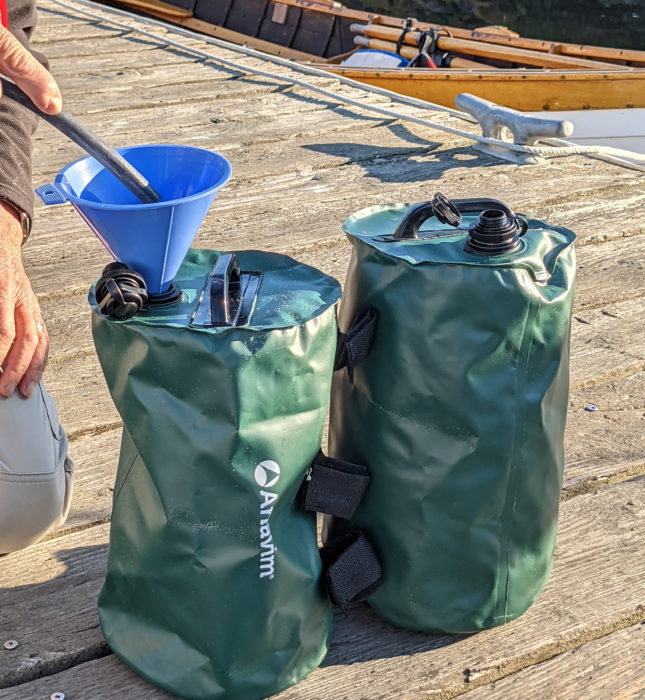 Jim Tolpin
Jim TolpinThe bags are stout enough to stand upright while being filled with water. The screw-on caps are tethered and have two parts. One opens the bag for filling with water (left) and the other, smaller cap leaves a valve with the bag (right) so it can be filled tight with air, orally inflated, or with water from a faucet or hose. To fill the bag with a hose, open the large valve and press the top of the bag flat against the bottom to expel the air. Insert the valve and hold the hose to the smaller opening. The valve will allow the bag to take on water until it is quite tight.
A quick search for water ballast bags online revealed a product I hadn’t thought of: water-filled weight bags that attach to a canopy’s support legs. The bags from Anavim, made of heavy-duty PVC, come with three heavy-duty Velcro attachment straps and a special fitting for filling. (The PVC is not a food-grade material and is not intended or recommended to be used to carry water for consumption.)
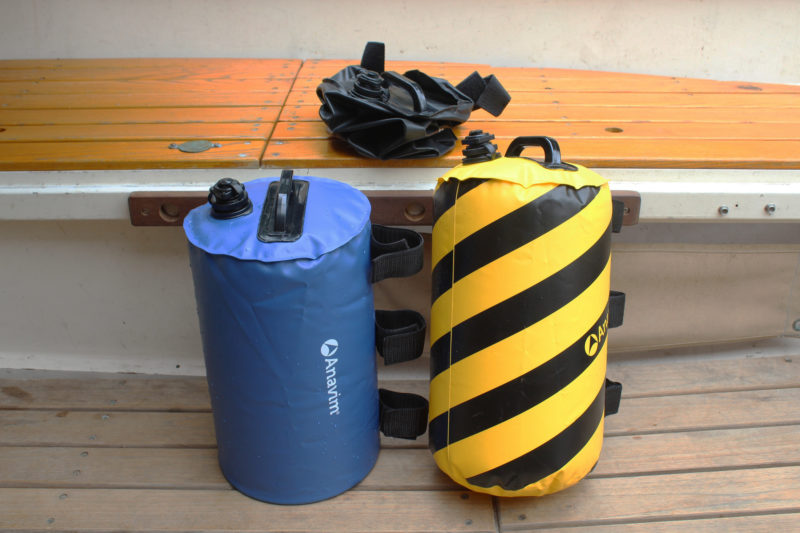 SBM
SBMThe blue bag has been filled by pouring-in water. The yellow bag has been filled with air using the valve to get it drum tight. The same degree of fill can be achieved by flattening the bag like the black bag here and using the valved cap to fill the bag with water under pressure.
The outer portion of the fitting has a one-way flap so you can inflate the bag to enable it to expand and stand up on its end for efficient filling, while the inner valve unscrews to accept a hose. If you don’t have access to running water, you can use a bilge pump or a bucket to fill the bag with the aid of a funnel. Each bag can hold 10 liters of water, about 22 lbs. To transport the bags in your car or boat to and from the launch site, you simply empty them and compress them to fit in a small canvas carry bag.
While I’ve been using the bags to add a bit of weight to the boat, they can also be used to correct a boat’s trim to get its best performance. As movable weight, the bags can also be used to adjust the trim for rowing in wind. Setting them in the stern to trim the boat down by the stern will help a boat track well on a downwind course; setting them in the bow will help hold a course to windward. The bags can also come in handy at camp to hold a tent in place when the wind is blowing, especially when the tent is set on sand or rock, where tent pegs are ineffective.
Of course, these bags can also be used as flotation bags. I added stretchers in my wherry’s bow and stern to attach them securely in place; each inflated bag adds about 22 lbs of buoyancy.
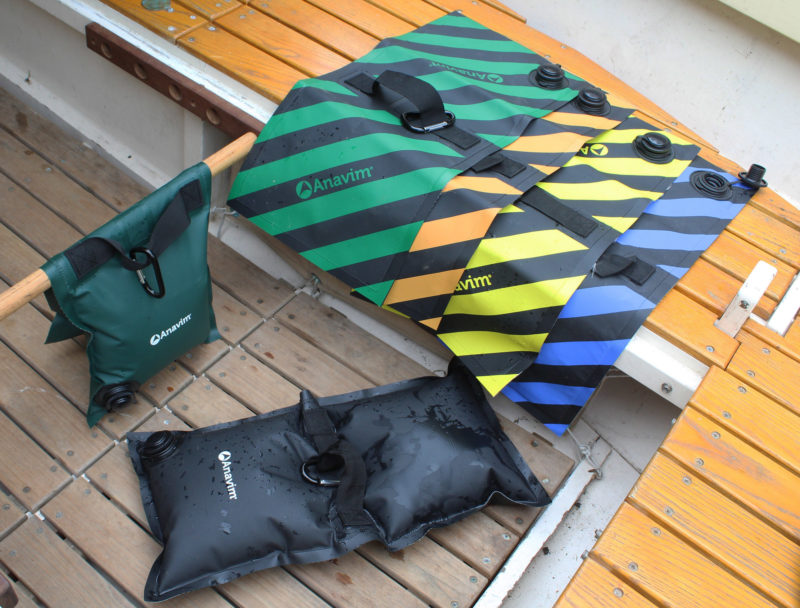 SBM
SBMAnavim also makes saddle-bag types of water weight bags. Passages through the middle of the bag allow water to flow from one end to the other. They can add about 11 lbs of ballast in areas too small for the 10-liter water bags, and are great for anchoring camera tripods. The striped bags all have black backs, which can absorb the heat of sunlight to warm water for washing or bathing.
These bags appear to be well designed and constructed, and I’m delighted with how effectively they fit my need for a quick way to add ballast or buoyancy.![]()
Jim Tolpin is a teacher and writer in the field of woodworking, and has lived by and boated in the waters around Port Townsend, Washington, for the past 40-plus years. As his bumper sticker says, “My Other Boat is a Whitehall.”
Canopy Water Weights are available from Anavim with prices starting at $23.98 for two to $49.98 for four in white, black, blue, and green. The Anavim store on Amazon offers the weights starting at $26.98 for two. The saddlebag design is priced at $26.99 for four.
Is there a product that might be useful for boatbuilding, cruising, or shore-side camping that you’d like us to review? Please email your suggestions.
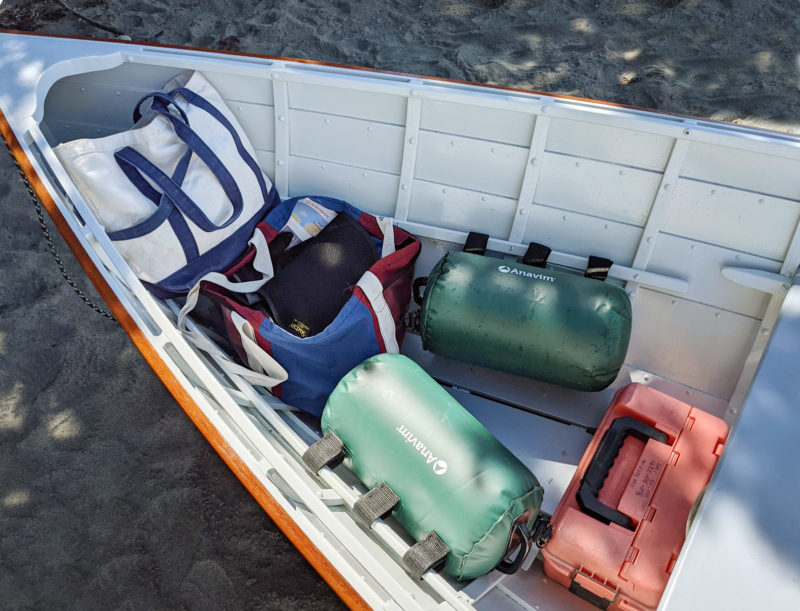

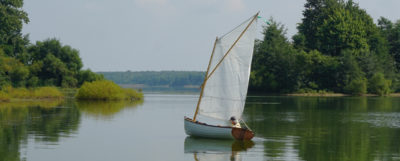
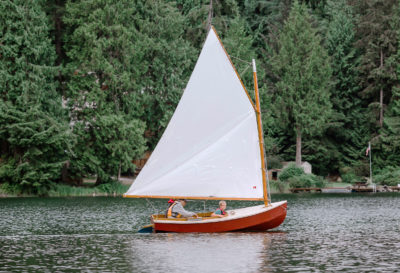
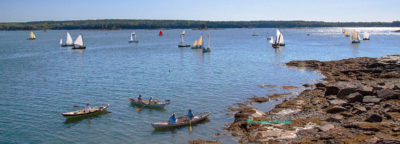
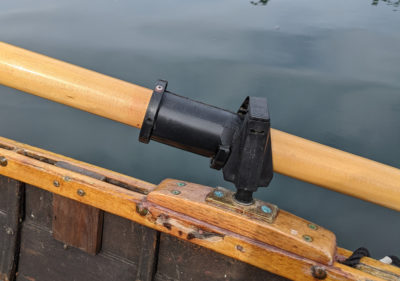
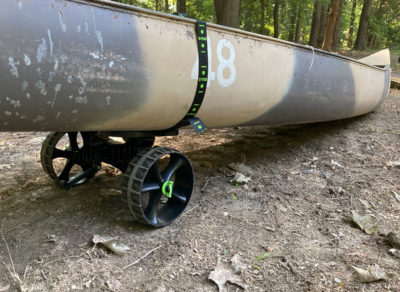
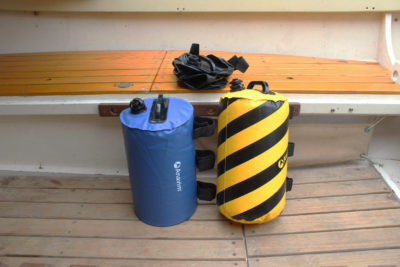
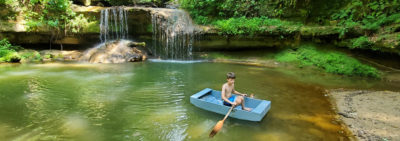
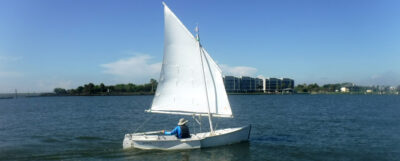
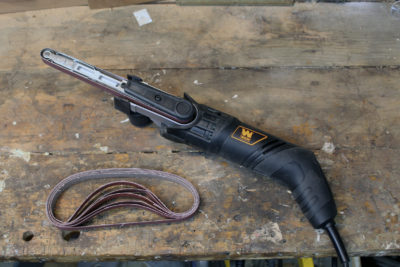

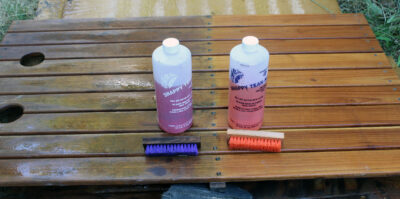
I wonder if these are as strong as the beach rollers that Duckworks sells. I’m thinking more in terms of fenders rather than lifting or rolling a boat over ground. These are certainly much less expensive.
The material used in the ballast bags is about 0.5mm thick, half the thickness of that used for the Aeré beach rollers, but both are fabric-reinforced. I could stand on the filled Anavim ballast bags and the saddle bags and they weren’t harmed by the pressure. It seems they could indeed be used as fenders for trailered boats where they’d be used occasionally and could then be deflated for storage while underway. The constant wear they’d be subject to with a boat kept dockside might wear them out more quickly than standard fenders.
—Ed.
I have a sailboat (a Swallow Storm 15) that is too light, and have been thinking of adding some removable form-fitted blocks of epoxy set with shot or similar.
The neutral buoyancy of water is an added attraction of going down a similar path with water bags, which should have but didn’t occur to me.
Thanks
What’s interesting is the number of times I search for something boaty on the internet, like how to add ballast to my tippy sailboat, and find a link to a most pertinent article on the Small Boats Monthly website. Pretty impressive!